Special Cards
The LAF uses several special cards to help staff members and investigators quickly identify animals that have special husbandry requirements, have recently had surgical procedures or may need to be quickly and easily located for purposes of transfer or to correct some problem.
On this page:
Special Diet/Water Card
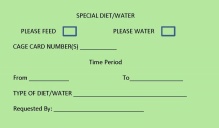
Investigators use the “Special Diet/Water Card” to indicate the animal needs a special diet or treated water. The LAF staff puts the card on the cage and administers the special diet and/or water supplied by the investigator.
Over Crowded Card
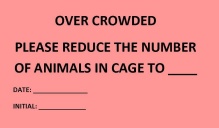
The “Over Crowded Card” is placed on cages with too many animals. LAF staff follows up with an email or phone call to the investigator. If the researcher does not remedy the situation, the animal care staff will adjust the animal numbers to acceptable levels.
Post-Operative Observation Card
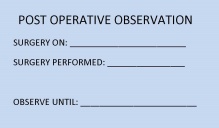
The surgeon or person returning the animal to the holding room will place the “Post-Operative Observation Card” on the animal's cage just after surgery.
Animal Sacrifice Request Card
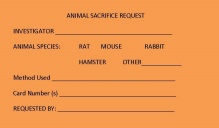
The investigator puts the “Animal Sacrifice Request Card” on the cage of an animal to indicate a request for euthanasia. That day's on-duty technician euthanizes the animal and dates the cage card. The investigator is charged for tech time.
Investigator Will Feed or Water Card
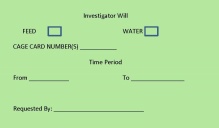
The investigator places the “Investigator Will Feed or Water Card” on any cage for which he/she wants to control the type and/or amount of food or water given to the animals per the IACUC approved protocol. This usually requires the investigator to monitor and record the weight of the animals, leaving the log in the room with the animals. This also requires that a daily log be kept indicating the animals have been fed and or watered each day.
Dead Animal Found Card
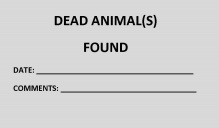
Animal care staff will put a “Dead Animal Found Card” on the cage where an animal has been found dead. Placing the animal in a plastic bag tagged with a Mortality Tracking sticker, they will leave it in the treatment/procedure room. The staff will call or email the investigator.
Transfer Card
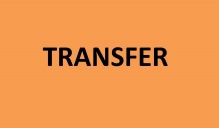
The “Transfer Card” is placed on any cages of animals that need to be transferred to a new room, protocol or facility. This helps identify correctly those animals and cages that need to be transferred.
Please Wean Card
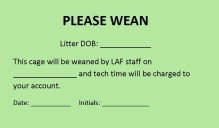
The animal care or veterinary staff place the “Please Wean Card” on cages of animals that need to be weaned. If the animals are not weaned by the date noted on the card, the LAF staff will wean the animals and charge the investigator tech time.
Do Not Feed Card
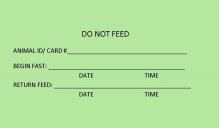
The “Do Not Feed Card” replaces the “Fast Card” and is put on the cage at the investigator's request. It's most commonly used to identify animals which require fasting prior to surgery. Please note there are two requested dates: one to begin fasting; another to resume feeding.
Approved Delayed Weaning Card
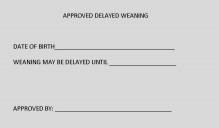
The “Approved Delayed Weaning Card” card is put on a breeding cage to indicate that the pups need additional time (more than the usual 25 days) with their mother before being weaned safely. Investigators can obtain approval from the veterinary staff on a litter by litter basis or for an entire strain of animals through the IACUC approval process.
Animal Removal Card
The Animal Removal Card is used whenever an animal has been euthanized. All information concerning the animal or group of animals that have been removed is on the front of the card. You can use a single animal removal card for mice, rats, birds and frogs, if all the animals are of the same species and removed from the same protocol on the same day using the same method. The card numbers may be recorded on the back of the card. For USDA covered species, you must use one Animal Removal Card for each animal removed.
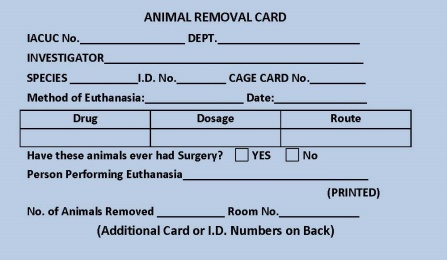
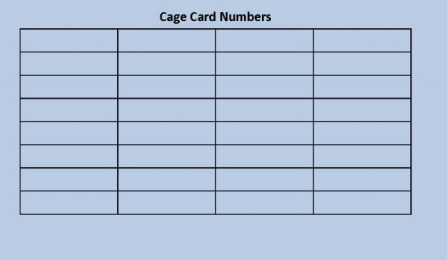
Please call 645-2025 if you have a physical plant emergency on the weekend.
UB's IACUC procedures and guidelines follow nationally established standards to ensure the university's animal research and education is ethical and compliant.
Please contact the veterinary on call if you have an animal emergency.
